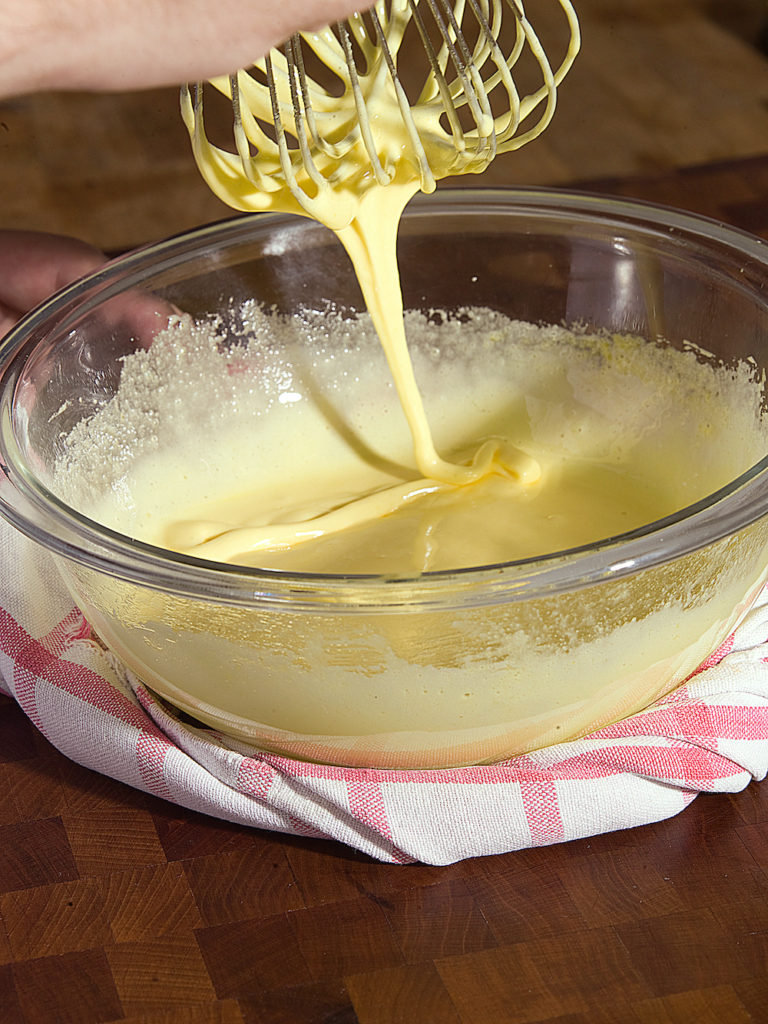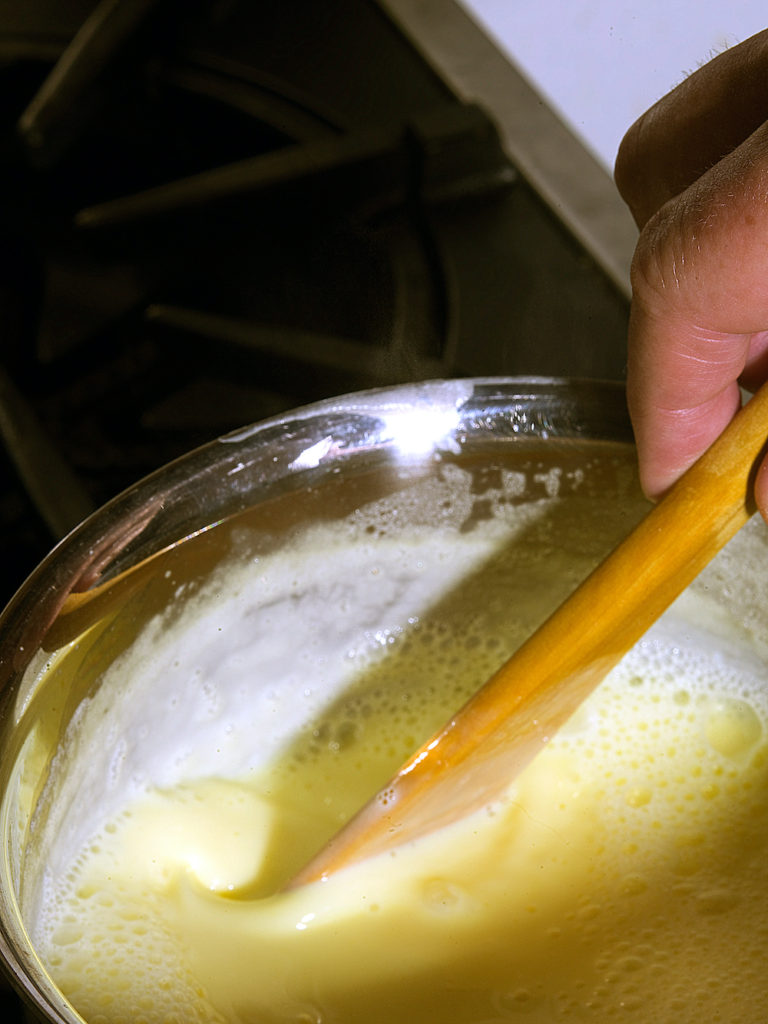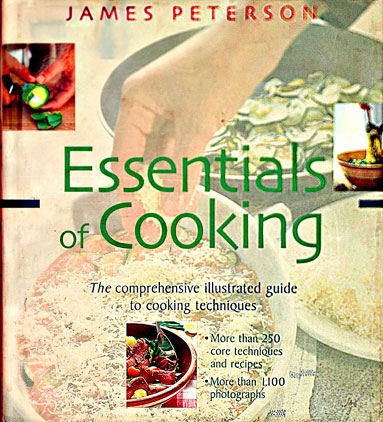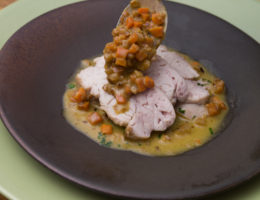A crème anglaise is simply milk that’s been sweetened, flavored, and thickened with egg yolks. Unlike most custards, which are allowed to set, crème anglaise is kept in constant motion so that rather than setting, it thickens. It is usually flavored with vanilla (a whole split vanilla bean is simmered in the milk) but other flavorings such as coffee (ground, simmered with the milk, strained), chocolate (cocoa worked with the egg yolks and sugar), or spices such as cinnamon can also be used.
Crème anglaise can be made thick or thin depending on the number of egg yolks used which can range from 8 to 20 per quart of milk. I usually settle on 12. Beat the egg yolks with the sugar (I use 7 ounces sugar per quart which is a little less than the classic 8) until the yolks are pale and pour in half the simmering milk. Return the yolk mixture to the pot of milk (off the heat) and stir thoroughly. Now the tricky part. Put the pot over medium heat and stir constantly with a wooden spoon. Keep a close eye—if it boils for a second it is ruined—to watch for when it starts to thicken. Traditional recipes say to hold the spoon sideways after dipping it in the crème anglaise and make a streak with your finger. When the streak stays in place, the custard is ready. I find this technique problematic, in part because I don’t like to stop stirring the crème anglaise even for a second. A better method is simply to look at the crème anglaise while you’re stirring and notice how the ripples that form as you stir, transform into silky waves. Don’t expect a crème anglaise to get thick like a béchamel sauce, but rather like the consistency of cream that’s been ever so slightly reduced.

Beat together egg yolks and sugar. 
Before cooking, the creme anglaise remains thin. 
The crème anglaise forms waves as it thickens. 
When finished, the creme anglaise coats the back of a spoon.


